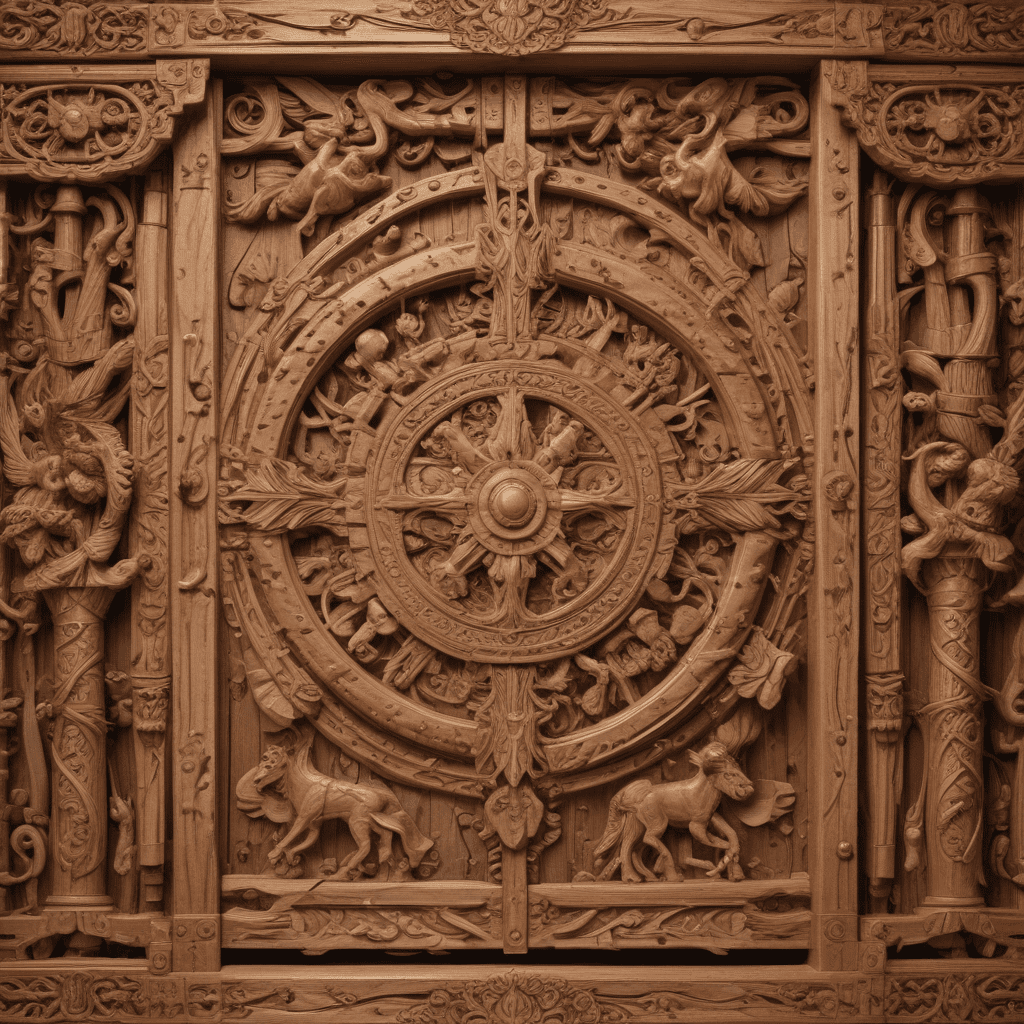Introduction: The Importance of Woodworking and Carpentry in Slavic Mythology
In Slavic mythology, the art of woodworking and carpentry holds a deep-seated significance, permeating the very fabric of their culture, beliefs, and folklore. From the construction of dwellings and shrines to the crafting of everyday objects imbued with symbolic power, wood has played an integral role in shaping the lives and worldviews of Slavic peoples. This article explores the profound connection between Slavic mythology and the art of woodworking, shedding light on its cultural, religious, and practical dimensions.
The Role of Wood in Slavic Beliefs
To the ancient Slavs, wood was not merely a material but a sacred substance imbued with spiritual essence. They believed that trees possessed sentient souls, and forests were considered sacred groves where deities dwelled. The oak, in particular, was revered as a symbol of strength, longevity, and wisdom, while the birch was associated with youth, purity, and fertility. Slavic mythology abounds with tales of trees acting as messengers between the mortal and divine realms.
Sacred Trees and Forests
In Slavic folklore, certain trees were considered gateways to the otherworld. The willow tree, with its drooping branches, was believed to provide passage between the worlds of the living and the dead. The aspen, known for its trembling leaves, was said to ward off evil spirits, while the hazel tree possessed the ability to grant wishes. Sacred groves were established in the depths of forests, serving as sanctuaries for religious ceremonies, rituals, and communion with the divine.
The Craftsman's Role as Mediator Between the Natural and Supernatural
Woodworkers and carpenters were highly respected figures in Slavic society, seen as intermediaries between the natural and supernatural realms. They possessed the knowledge and skill to transform raw wood into objects of both practical and spiritual significance. Through their craft, they honored the spirits of the trees and channeled their power into their creations. In many Slavic legends, craftsmen are depicted as heroes who use their skills to overcome evil forces or create wondrous objects that benefit their communities.
6. Symbolic Meanings of Wooden Objects
In Slavic cultures, wooden objects were often imbued with specific symbolic meanings. A wooden spoon, for instance, represented fertility and abundance, while a carved bowl symbolized hospitality and welcome. A wooden cradle stood for new beginnings and the continuity of life, while a wooden casket held the remains of the departed, embodying the transition from life to death. These symbolic associations reflected the deeply interconnected relationship between the Slavs and the natural world.
7. Traditional Slavic Woodworking Techniques
Slavic woodworking techniques have been passed down through generations, preserving the unique craftsmanship of their ancestors. One notable technique is the use of an adze, a tool with a curved blade that is used to shape and smooth wood. Other traditional tools include the gouge, a curved chisel used for carving, and the drawknife, used for shaving and shaping wood. Slavic woodworkers also employed intricate joinery techniques, such as dovetailing and mortise and tenon joints, showcasing their exceptional craftsmanship.
8. The Art of Wood Carving: Protective Symbols and Decorative Motifs
Wood carving was an integral part of Slavic woodworking, serving both protective and decorative purposes. Carpenters carved symbols of protection, such as the thunderbird, which was believed to ward off evil, and the solar cross, which represented the sun's power. They also carved intricate geometric patterns, floral motifs, and depictions of mythical creatures, imbuing their creations with both beauty and symbolic meaning. These carvings not only adorned wooden structures but also found their way onto everyday objects, from spoons and bowls to furniture.
9. Contemporary Slavic Woodworking and Carpentry
The art of Slavic woodworking and carpentry continues to thrive in the present day, preserving the cultural heritage of the past while embracing modern techniques. Contemporary Slavic woodworkers combine traditional craftsmanship with innovative designs, creating unique pieces that embody both beauty and functionality. They use their skills to craft furniture, architectural elements, decorative objects, and musical instruments, showcasing the enduring legacy of Slavic woodworking and carpentry.
10. Conclusion: The Enduring Legacy of Slavic Woodworking and Carpentry
Through the art of woodworking and carpentry, Slavic peoples have forged a deep and enduring connection to the natural world, imbued their creations with symbolic meanings, and passed on their cultural heritage through generations. From the construction of sacred structures to the carving of everyday objects, Slavic woodworking and carpentry have shaped the lives, beliefs, and folklore of the Slavic people. As contemporary woodworkers continue to practice their craft, the legacy of Slavic mythology remains alive, ensuring the continuity of this ancient and vibrant tradition.
FAQ
Q: Why was wood so important to Slavic cultures?
A: Wood held deep spiritual significance, representing the life force of nature and embodying the connection between the natural and supernatural realms.
Q: What types of trees were considered sacred by the Slavs?
A: The oak, birch, willow, aspen, and hazel were among the most sacred trees, each associated with specific deities or protective qualities.
Q: What was the role of craftsmen in Slavic societies?
A: Craftsmen, particularly woodworkers and carpenters, were revered as intermediaries between the natural and supernatural worlds, using their skills to create objects of practical and spiritual importance.
Q: Are traditional Slavic woodworking techniques still used today?
A: Yes, traditional techniques such as adzing, gouging, and dovetailing continue to be employed by contemporary Slavic woodworkers, preserving the cultural heritage of their ancestors.
Q: How does Slavic mythology influence contemporary woodworking?
A: Slavic mythology inspires contemporary woodworkers to incorporate protective symbols, decorative motifs, and cultural themes into their creations, preserving and传承ing the legacy of their ancestors.



